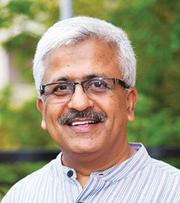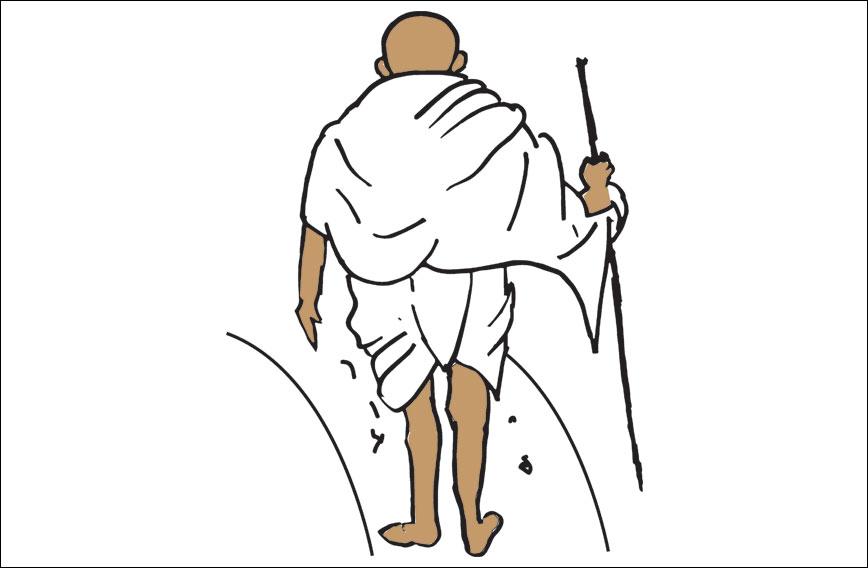
R BALASUBRAMANIAM
The entire nation will be marking Mahatma Gandhi’s 150th birth anniversary throughout 2019. For many like me, born in independent India, Gandhi and his life were introduced to us as part of our school curriculum. To us, he was the ‘father of the nation’ whose birthday we celebrated each year and remembered for securing us our freedom from the British. This limited view of Gandhi is what I carried for a long time until I began to understand him, his life and his message a little more deeply.
My life’s work in the space of human development, especially amongst the indigenous tribals of Mysuru district, was inspired by the transformational message of Swami Vivekananda and Mahatma Gandhi. If Swami Vivekananda asked the youth of India to observe seva (service) and tyaga (sacrifice) as our national ideals, it was the message of ahimsa (non-violence) and satya (truth) that drew me to Gandhi. I saw in him someone more than the freedom fighter my teachers had described him as. He was a politician, a strategist, a philosopher, a humanist, a spiritual seeker, a scientist, a shrewd manager, a difficult husband and father, a social worker, an activist, a saint and a patriot all rolled into one. It was difficult for someone like me to comprehend the magnitude of his life, his personality and the fact that he meant so much to so many different people. Einstein’s words that people in the future would scarcely believe that such a person in flesh and blood walked upon this earth, resonated with me.
For Gandhi, the ideals of ahimsa and satya were not just something he borrowed from the scriptural wisdom of ancient India. For him, practice of these values was spiritual sadhana on the one hand and political action on the other. The shrewd strategist that he was, he fashioned the practice of them into powerful weapons to be used in his fight against the British. Gandhi’s demanding expression of these ideals that he believed in, made him someone easily admired but rarely emulated. He redefined political morality and public probity with such high standards that the politicians of today pale in comparison to what he stood for. Gandhi believed that morality was not a fancy aspiration but an essential ingredient for the exercise of political leadership.
For Gandhi, human existence was an extraordinary opportunity not to be wasted in ordinary pursuits. Seeking God was the very purpose of such existence and he uniquely transformed his own personal spiritual journey into a quest for societal progress. Gandhi understood that ‘man’ was the building block of society and ensuring a value-driven existence at the personal level would necessarily translate into a healthy society. He used symbolism to very powerful effect in communicating the centrality of this message. Whether it was the charkha and homespun khadi, natural medicine, his concepts of need versus greed, his food habits or daily tasks reflecting self-reliance — he ensured that one needed to start with oneself before expecting any major social transformation. Today, what we are left with are the symbols — bereft of the philosophical message Gandhi gave us.
Gandhi intelligently addressed the issue of inspiring people to engage in social upliftment and national reconstruction. His famous quote, “The best way to find oneself is to lose yourself in the service of others”, wonderfully captures this intent of his. To the more discerning, he made living for ‘others’ a ‘spiritual pursuit’. The transience of human achievement and the impermanence of material wealth were of critical consideration to this thinking. What he attempted to demonstrate by his lifestyle was to show us a higher reason to live and a higher state to reach within the limitations and boundaries of human existence. He has, in very simple terms, given us a higher ideal to strive for and in this striving he found answers to the material problems of the suffering millions too. In doing so, he assured us that an indomitable power would come to us and we would be able to throw away all our concerns for ourselves and place ourselves as servants of society and use our inner energy and will to transcend the problems of our human brethren.
Gandhi believed that poverty was the worst form of violence and wanted the person in the last mile to participate in the economic well-being of the nation. When we are celebrating India’s growth story, we need to understand that our dream for India should not be mere 8 percent growth alone, but development that is inclusive, participatory and encompasses India’s rural areas. Without romanticising Gandhi, we need to understand how rural India has been left out of our growth story and how the Indian economy today has become urban-centric and urban-driven. While Gandhian cottage industry has lost much of its relevance, his economic belief in small being beautiful has not. We now need to integrate his thoughts in making sure that the toiling millions are not left off the economic bandwagon. His ideas on micro-enterprises need to see the light of day as rural social business units that are driven by the land-based economy. Beyond mere economic growth and creating jobs and business ownership, such enterprises will also ensure improved social status of rural communities, reduce urban migration and enhance the quality of life in rural areas in line with what Gandhi had hoped.
Another oft-repeated cliché in today’s India is satyagraha and many have started equating ordinary street protests and narrow political dissent with one of Gandhi’s most powerful methods. The essential difference is that Gandhi based his satyagraha on a spiritual platform and never saw it as an instrument of blackmail or manipulation. Gandhi saw it as a demanding responsibility and not mere sloganeering or waving the national flag. He saw it as a means of moral transformation and self-purification. In Gandhi’s view, a true satyagrahi lived his values from within and displayed no hatred or dislike towards any person or system. All that the satyagrahi has is a deep and engaging love for truth and he keeps expressing his views until he can achieve his intended end by not just peaceful means but also by constant self-analysis of his methods and actions. In the Gandhian understanding of peaceful non-violence, there was no space for self-aggrandisement or for the theatrics that we keep seeing in the public arena today. Gandhi was clear in not just the meaning but also the spirit of satyagraha and was always conscious that satya and aagraha went together.
The 150 years milestone is an apt time for us to go beyond mere intellectualisation of Gandhi and his message or building a Swachh Bharat. Keeping aside petty political debate over who are the natural inheritors of his philosophy, it is time for our politicians and people to pause and reflect on what made Gandhi, the Mahatma. We need to be constantly aware of our commitment to love, peace, non-violence and truth on an individual level and strive to live it in the small actions we perform. Living his message on a daily basis for all our lives is the only way to realise the India of Gandhi’s dreams. And that can happen only when we awaken the Mahatma in each one of us.
Dr R. Balasubramaniam, founder of the Swami Vivekananda Youth Movement, Mysuru, is a development activist and author. www.drrbalu.com
Comments
Currently there are no Comments. Be first to write a comment!




